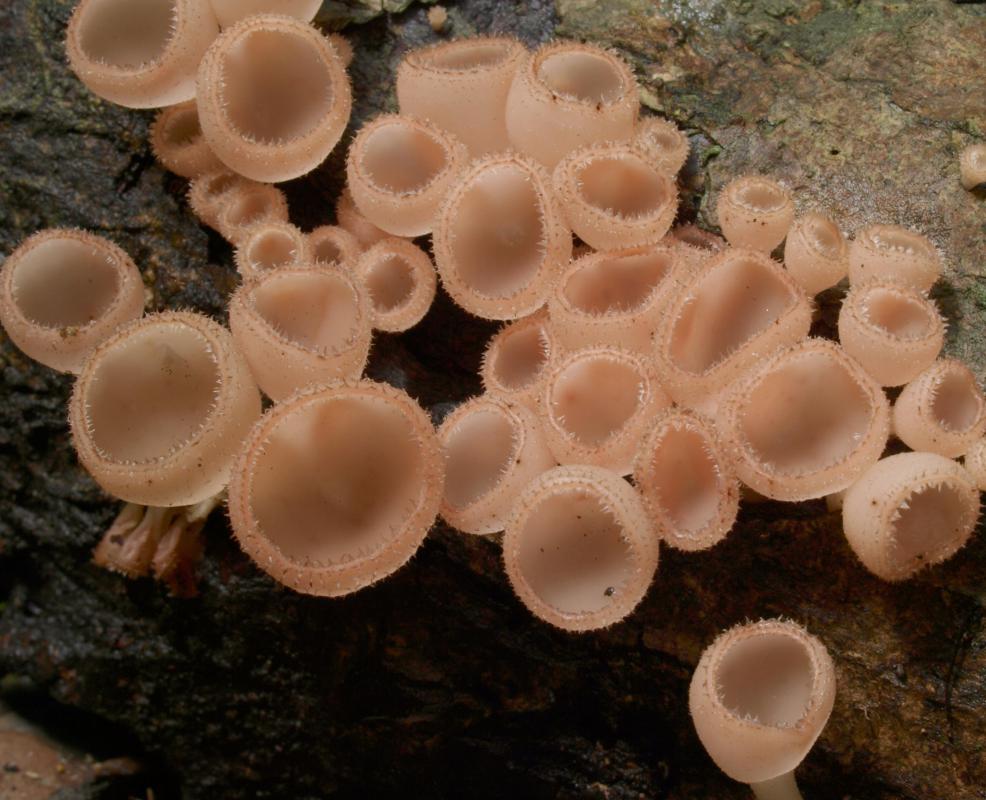At HomeQuestionsAnswered, we're committed to delivering accurate, trustworthy information. Our expert-authored content is rigorously fact-checked and sourced from credible authorities. Discover how we uphold the highest standards in providing you with reliable knowledge.
What are Parasitic Fungi?
Parasitic fungi are members of the Fungi kingdom, which thrive by latching on to other organisms and taking nutrients from them. They are a type of symbiotic fungi, but they are not mutualistic because they do not tend to give anything of value back to their host in return for sustenance. Fungi can be separated into three distinct groups, based on how they interact with their hosts: mycorrhizal fungi work in cooperation with a living host, parasitic fungi attack a living host, and saprophytic fungi feed on a dead host.
Generally, these fungi are highly specialized, designed to attack one or a handful or particular species of plants or animals to survive. In some cases, however, the fungi may be quite general and able to adapt to integrate with a wide range of creatures. Parasitic fungi can be separated into two large groups — the Basidiomycetes and the Ascomycetes — with only a small handful of fungi existing outside of these two sets. Although not actually fungi, many people consider the Oomycetes to be in the parasitic group, because they share many properties with true fungi. These fungi-like parasites, which include those responsible for sudden oak death and potato blight, are some of the most destructive plant parasites on the planet.

Although parasitic fungi live on living hosts, many are adapted to transform into saprophytic fungi should they kill their host. In this case, they will find a healthy host, invade it, and drain its nutrients until the creature dies, and then continue to feed on the dead host, aiding in the process of decay. Some fungi will then go on to find a fresh host and repeat the cycle.

There are thousands of species of fungi that are parasitic, and some have adapted to be extremely specialized, almost to the point of absurdity. For example, there are types of Laboulbeniales, such as the obligate insect parasites, which are adapted to infest only the Harmonia axyridis beetle. They infest these beetles so pervasively that for years, entomologists believed the fungus was simply a characteristic of the beetle itself. Even more extreme examples of these fungi are adapted to infest only the left side of a specific fly.

One of the primary defenses against parasitic fungi are actually other fungi. Many of the Mycorrhizal fungi, which form mutualistic relationships with other organisms, protect those organisms against the parasitic variety invading their space. They do this in a number of different ways, including excreting natural antibiotics that kill off other fungi adapted to that particular host. Plants and some animals therefore have adapted to encourage the growth of the Mycorrhizal fungi as a way of protecting themselves from the damaging parasites.
AS FEATURED ON:
AS FEATURED ON:














Discussion Comments
Yeah, I read that article too! It's so creepy! The pictures of the fungi growing out of the head of the ant are almost too much for me to look at! I heard that fungi's life cycle is slowly diminishing though and that they might not be around much longer... We'll see.
Anyway, there are so many species of fungi in the world, I'm sure scientists will find a similar fungi one day. They can't be the only ones out there with all of the life that has already been found on this planet. I just hope they never find one that lives near my home. Haha! I would totally creeped out knowing that the bugs that live in my backyard are secretly being controlled by a species of fungi.
Has anyone heard of that parasitic fungus that infects ants and takes over their minds, controlling them and forcing them to leave their nest and latch onto a leaf in a death grip before taking a bite from the vein of the plant, which then kills them, allowing the fungus to reproduce and move on to infect other ants? I read about it on National Geographic. The fungus is called Ophiocordyceps unilateralis.
It's totally creepy to think that a parasitic fungus can control the muscles and actions of a species, isn't it? I wonder if they'll ever find anymore fungi that act in the same way...
Post your comments